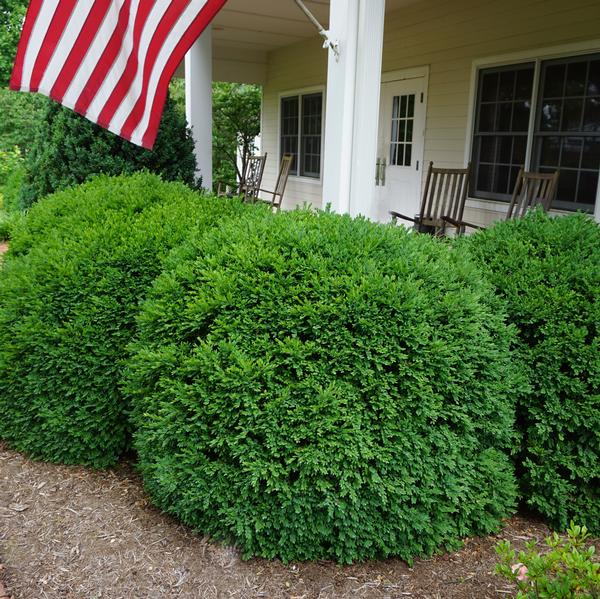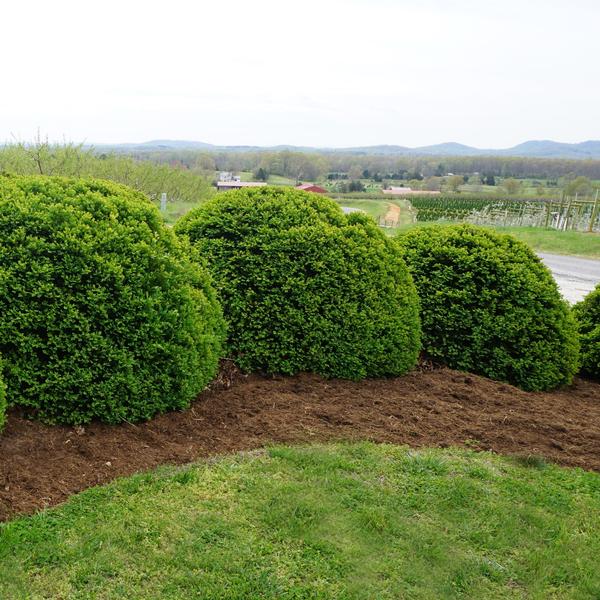Buxus x 'Green Velvet'
Green Velvet Boxwood
Cold-hardy hybrid boxwood with a somewhat rounded habit that is slightly wider than tall. Responds well to pruning. Beautiful light-green foliage in spring. Deer resistant.
- » Medium growth rate; 2"-3" per year
- Category:Shrubs
- Hardiness Zone:5-8
- Tall:2 Feet
- Wide:3 Feet
Foliage Color
| • | Green |
Soil Moisture Preference
| • | Good Drainage |
Wildlife
| • | Deer Resistant |
Growth Rate
| • | Medium |
Boxwood Exposure
| • | Sun (Location is sunny from late morning to late afternoon) |
| • | Shade (Location has no direct sun) |
| • | Part Shade (Location is primarily shaded from late morning to late afternoon) |
Boxwood Zone
| • | Zone 5 (Average Annual Minimum Temperature -20 F to -10 F) |
| • | Zone 6 (Average Annual Minimum Temperature -10 F to 0 F) |
| • | Zone 7 (Average Annual Minimum Temperature 0 F to 10 F) |
| • | Zone 8 (Average Annual Minimum Temperature 10 F to 20 F) |
Boxwood Foliage Color
| • | Green (Foliage is Predominately Green) |
Additional Information about Buxus x 'Green Velvet'
Cold-hardy hybrid boxwood with a somewhat rounded habit that is slightly wider than tall. Responds well to pruning. Beautiful light-green foliage in spring. Deer resistant.
Growing & Maintenance Tips for Buxus x 'Green Velvet'
‘Green Velvet’ should be pruned lightly in late winter or early spring to maintain desired habit. It may be sheared into edging and other formal applications. Use hand pruners or shears. Thinning is not necessary but, as with any boxwood, it will help increase airflow and sunlight penetration into the interior of the plant which reduces the chance of disease.
‘Green Velvet’ is very susceptible to boxwood leafminer and shows variable results in tolerance and susceptibility to boxwood blight. It has few other pest or disease issues when planted and cared for properly.
Interesting Notes about Buxus x 'Green Velvet'
‘Green Velvet’ has been very popular for the past 20-30 years, however we are seeing better alternatives today. We have seen and heard some reports of root issues possibly related to poor drainage, which may be explained by its sempervirens parentage. In many landscapes, it will reach its 15 year size at a moderate speed then very slow growth afterwards.
Uses: Small specimen, low hedge, foundation plant, edging, parterre or knot garden, containers.
Substitutes: Chicagoland Green™, ‘Buddy’, ‘Green Mound’, ‘Green Gem’, ‘Little Missy’

